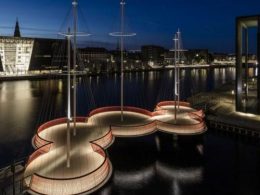By @EONSLD
The Money Museum at the Bank of Korea was designated as National Historic Site in 1981 and it is housed in one of the earliest examples of modern architecture in Korea. This historic building has played an important part of the history of finance in Korea.
Construction of the building began in 1907 and it was to be used for the Dai Ichi Ginko, the First National Bank of Japan. However, in 1909, when the older Bank of Korea was established as the central bank of the Korean Empire, the building was repurposed for the Bank of Korea. During the Japanese colonial period, the bank was renamed the Bank of Joseon and the building was used as its head office starting in 1912 when construction was complete.
When today’s Bank of Korea was established on June 12, 1950, the building became its head office. During the Korean War (1950-1953), the building was nearly gutted and repairs weren’t completed until 1958. After a new head office was built in 1987 behind the original building, work began to restore the historic edifice to its initial architectural glory. The outer wall was completely restored, and the interior was finished with marble so that it could function as a modern building. After the completion of this restoration work in 1989, the building has been used as the nation’s Money Museum since 2001, in celebration of the 50th anniversary of the Bank of Korea.









